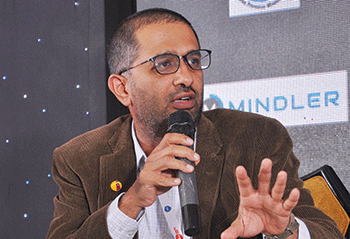Explaining India’s higher education decline
 Let’s look at the underlying causes that have contributed to the decline and steady deterioration of India’s public higher education system during the past seven decades after independence.
Let’s look at the underlying causes that have contributed to the decline and steady deterioration of India’s public higher education system during the past seven decades after independence.
The first question to ask is why should government invest in higher education at all. Two answers come to mind. The first is that higher education has externalities, i.e. it benefits not only those who receive it, but other people and society in general. Secondly, specific to the Indian context is the issue of social transformation. Uniquely in our case, the Constitution of India mandates social revolution to build an egalitarian and equitable society. Government intervention is regarded as an important way to attain this constitutional goal.
However, government involvement is based on three presumptions: First, that there is a free market for higher education in which private players are free to enter and exit. Second, that government investment in higher education flows into institutions which have high externalities. For example if it invests in medical education, there are high externalities. The doctors produced by medical colleges benefit, and society as a whole benefits from becoming healthier. The third presumption is that government funding of higher education is distinct from government operating higher education institutions itself.
Unfortunately, none of these presumptions are valid in the Indian context. The market for higher education is not free. Higher education is highly regulated and it’s very difficult for anyone to enter and exit this sector. In addition, there’s the dogmatic belief in government that education institutions cannot be run for profit.
The second presumption that the Central and state governments concentrate investment in higher education institutions with positive externalities is also untrue. On the contrary, they tend to invest randomly in institutions without any regard to externalities. They also invest far more in elite institutions such as the IITs, IIMs and AIIMS rather than in workhorse state universities, regional engineering and medical colleges which teach the masses and are in poor condition.
The third presumption that government will fund rather than run colleges and universities, is also invalid in the Indian context. Public institutions of higher education, whether of the Union or state governments, have in effect become government departments, extensions of the civil service in which career progression is very similar to government. In the process, the idea that these are teaching institutions is lost.
These are some of the fundamental reasons why our public higher education system functions in a very perverse manner and is in deep crisis, although there are some islands of excellence. Even though there’s widespread awareness that higher education needs urgent reform, nobody really wants the system to change. There is no rational reason why tuition fees in public colleges and universities are pegged so low, especially in institutions whose graduates have high market value.
The unaddressed crisis in higher education has prompted the rich to secede from the system and enroll in large numbers in colleges and universities abroad. While this isn’t entirely an adverse development, the point is that they spend $10 billion (Rs.68,755 crore) per year in tuition and other fees. This $10 billion could, if spent within the country, generate 2.5 million jobs within the economy.
While the rich can escape to higher education institutions abroad, the poor are stuck in India’s poor quality, dysfunctional higher ed institutions. This to my mind is a very regressive social outcome, because the people who need good education most for social and economic uplift, can’t get jobs because the education system doesn’t educate, enable and empower them adequately.
Therefore, those of us in the education sector owe a responsibility to the 400 million people who can’t get half-decent jobs because of their poor qualifications and training, to solve this problem. The solution is to address the three presumptions I spoke of earlier.
The first need is a functional, competitive market in education. The reality is that a lot of people make money in education, except education institutions. The tuitions and coaching industries are booming. But genuine promoters of institutions have to resort to all sorts of suspicious stratagems, create non-profit trusts, private companies and surmount numerous legal hurdles to build sustainable schools, colleges and universities. We need to unpack and jettison the old dogmas which we have inflicted on ourselves. We also need a simple progressive accreditation system which encourages institutions to improve, rather than the rigorous licensing system which disqualifies institutions without excellent infrastructure.
Secondly, government funding must move from elite institutions such as the IITs and IIMs to state colleges and universities in tier-II and tier-III towns. Third, the locking down of education, closing it against new entrants, and excessive bureaucratisation of public universities must be reversed by conferring administrative and academic autonomy upon them. Vice chancellors ought to enjoy the same relative autonomy as high court judges.
Implementing these common sense and doable solutions would be a great way to start the process of restoring higher education in India to its ancient glory.
(Nitin Pai is co-founder and director of the Takshashila Institution, Bangalore)